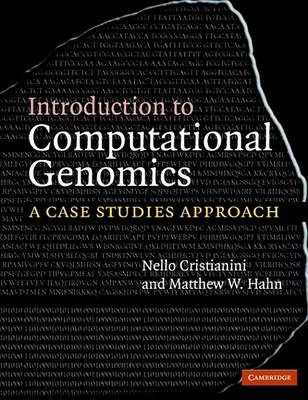
Introduction to Computational Genomics
Cambridge University Press (Verlag)
978-0-521-67191-0 (ISBN)
Where did SARS come from? Have we inherited genes from Neanderthals? How do plants use their internal clock? The genomic revolution in biology enables us to answer such questions. But the revolution would have been impossible without the support of powerful computational and statistical methods that enable us to exploit genomic data. Many universities are introducing courses to train the next generation of bioinformaticians: biologists fluent in mathematics and computer science, and data analysts familiar with biology. This readable and entertaining book, based on successful taught courses, provides a roadmap to navigate entry to this field. It guides the reader through key achievements of bioinformatics, using a hands-on approach. Statistical sequence analysis, sequence alignment, hidden Markov models, gene and motif finding and more, are introduced in a rigorous yet accessible way. A companion website provides the reader with Matlab-related software tools for reproducing the steps demonstrated in the book.
Nello Cristianini is a Professor of Artificial Intelligence, University of Bristol. Matthew Hahn is an Assistant Professor at the Department of Biology and School of Informatics, Indiana University.
Prologue (in praise of cells); 1. The first look at a genome (sequence statistics); 2. All the sequence's men (gene finding); 3. All in the family (sequence alignment); 4. The boulevard of broken genes (hidden Markov models); 5. Are Neanderthals among us? (variation within and between species); 6. Fighting HIV (natural selection at the molecular level); 7. SARS: a post-genomic epidemic (phylogenetic analysis); 8. Welcome to the hotel Chlamydia (whole genome comparisons); 9. The genomics of wine-making (analysis of gene expression); 10. A bed-time story (identification of regulatory sequences); Appendix.
| Erscheint lt. Verlag | 14.12.2006 |
|---|---|
| Zusatzinfo | Worked examples or Exercises; 12 Tables, unspecified; 3 Halftones, unspecified; 48 Line drawings, unspecified; 6 Line drawings, color |
| Verlagsort | Cambridge |
| Sprache | englisch |
| Maße | 189 x 246 mm |
| Gewicht | 370 g |
| Themenwelt | Mathematik / Informatik ► Informatik ► Theorie / Studium |
| Naturwissenschaften ► Biologie ► Genetik / Molekularbiologie | |
| ISBN-10 | 0-521-67191-4 / 0521671914 |
| ISBN-13 | 978-0-521-67191-0 / 9780521671910 |
| Zustand | Neuware |
| Haben Sie eine Frage zum Produkt? |
aus dem Bereich


